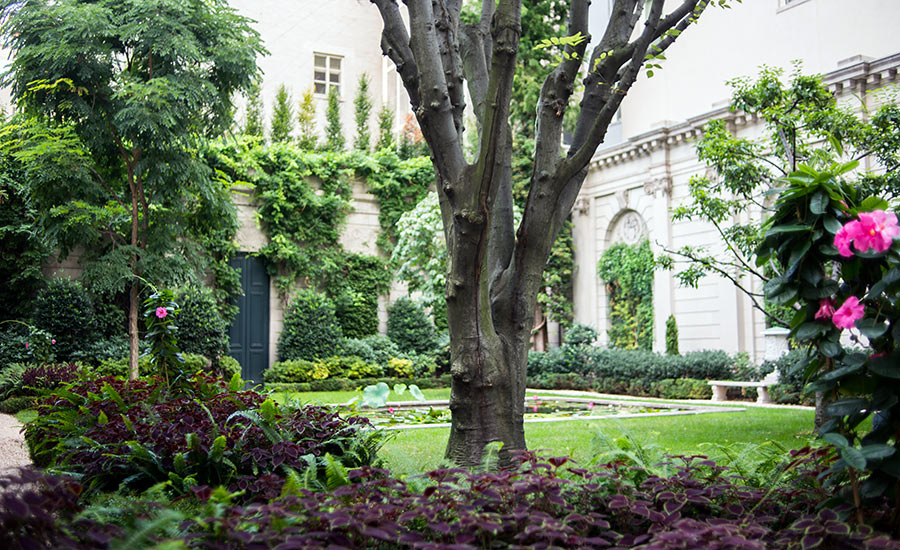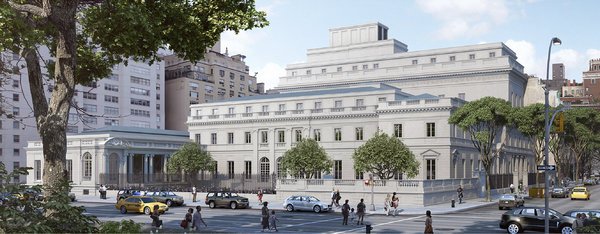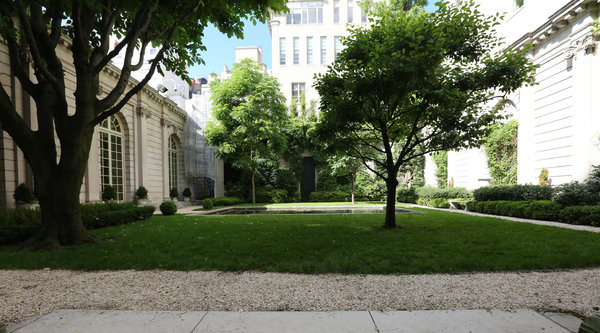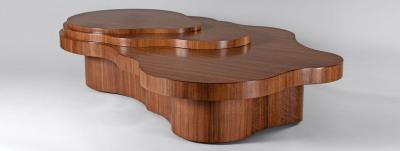Expansion To Frick Collection Threatening Famous Garden Faces Opposition

- 70th St. Garden at the Frick Collection. Photo by Navid Baraty, courtesy of The Cultural Landscape Foundation
A proposed expansion to the Frick Collection in New York City has residents and professionals up in arms over destruction of a garden by late landscape architect Russell Page. The six-story expansion, designed by architect Davis Brody Bond, would extend the museum into the area currently occupied by the garden on East 70th St. and connect the museum to its arts reference library on East 71st St. Additionally, if the project is approved by the city’s Landmarks Preservation Commission (LPC), the museum would convert two basement rooms and a space on the top floor into viewing galleries, creating 50% more space for temporary exhibits and 24% more space for exhibitions of their permanent collection of more than 1,200 artworks.

- A rendering of the proposed expansion to the Frick Collection. Courtesy of Neoscape Inc.
Originally built in 1914 by legendary New York architecture firm Carrère and Hastings as the home of industrialist and steel magnate Henry Clay Frick, the building was converted into a museum after Frick’s death, opening its doors to the public in 1935. The museum has undergone alterations before, adding an entrance lobby in the 1970’s, when it was named an Individual Landmark by the LPC, and converting an outdoor portico into an indoor space in 2011. Of the Page garden, which was originally a temporary installation during renovations of the 70’s, the Museum is quoted as saying, “The Frick Collection has decided to abandon its long-range plans for a wing covering the three vacant lots, thus enabling the proposed garden to become a permanent feature instead of the interim garden.”
Despite three unsuccessful attempts to expand into the space since 2001, the Frick has maintained that they require the extra room, citing a 37% growth in attendance over the last 5 years and a 75% growth in the museum’s collection since 1935. Ian Wardropper, director of the Frick Collection, said in reference to the garden’s permanent status, that in 1973, “Permanent meant a garden that would last for a few years until the museum could build the building that was needed. We’re now 40 years later and at that point. People love the place and they’re afraid that it’s going to change. I have to reassure them that this is a modest plan that’s meant to support everything we do.”

- 70th St. Garden at the Frick Collection. Photo by Chester Higgins Jr. courtesy of The New York Times
There is, however, a growing movement in opposition to the expansion. Unite To Save The Frick (UTSTF), an organization of New York citizens, landscape architects, and urban preservationists, have dedicated themselves to “[protecting] the Frick’s signature ensemble of elements from short-sighted destruction and to advocate for responsible modernization.” The group has circulated a petition, which has over 2,000 signatories at the time of this writing, to stop the expansion. Robert A.M. Stern, UTSTF member and dean of the Yale School of Architecture, made a public appeal that the garden be preserved, saying, “Gardens are works of art, this one is in perfect condition by Russell Page, one of the pre-eminent garden designers of the 20th century, and it should be respected as such. It’s as important as a tapestry or even a painting, and I think the museum is obligated to recognize its importance.”
Everett Fahy, former director of the Frick Collection (1973–1986) who oversaw the garden’s installation, expressed his displeasure with the proposal, saying, “It’s a house museum. If it were kept as a house museum it would serve its purpose, […] I can’t believe anything close to the current designs would be approved by the Landmarks Commission. It’s awful. That intimacy and atmosphere would be lost.” Fahy continued by offering a counterproposal, repurposing the Frick’s Library, “If you really need to expand, start here. Young people use the Internet to write their papers, very few come to the library.”
The proposed expansion has yet to be scheduled for a public hearing by the New York City Landmark Preservation Commission. The Unite To Save The Frick petition is currently circulating and can be found HERE.




























